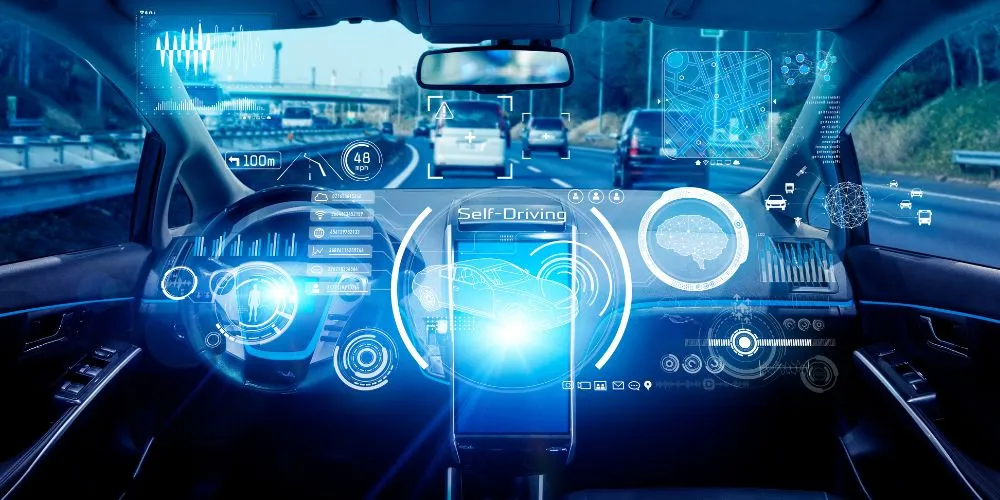Autonomous vehicles, once a concept relegated to science fiction, are now a reality, reshaping the future of transportation. This comprehensive exploration delves into the fundamental principles, key components, recent innovations, notable applications, and the transformative impact of autonomous vehicles on the automotive industry and society.
Understanding Autonomous Vehicles
Autonomous vehicles, commonly known as self-driving cars, are equipped with advanced technologies that enable them to navigate and operate without human intervention. These vehicles utilize a combination of sensors, cameras, radar, lidar, and sophisticated algorithms to perceive their surroundings, make decisions, and navigate safely.
Levels of Automation
Autonomous vehicles are classified into different levels of automation, ranging from Level 0 (no automation) to Level 5 (full automation). Each level represents the extent of autonomy and the role of human drivers in vehicle operation.
- No automation, where the human driver is fully in control.
- Driver assistance with automated features such as cruise control.
- Partial automation, where the vehicle can simultaneously control both steering and acceleration.
- Conditional automation, allowing the vehicle to handle most driving tasks under specific conditions.
- High automation, where vehicles can operate autonomously in certain scenarios without human intervention.
- Full automation, with the vehicle capable of complete autonomous operation under all conditions.
Key Components of Autonomous Vehicles
The intricate capabilities of autonomous vehicles stem from several key components working harmoniously:
- Sensors: They are equipped with an array of sensors, including cameras, radar, lidar, and ultrasonic sensors, to perceive the surrounding environment and detect obstacles.
- Control Systems: Advanced control systems, powered by artificial intelligence and machine learning algorithms, process sensor data and make real-time vehicle navigation decisions.
- Connectivity: Autonomous vehicles often rely on high-speed, low-latency connectivity to transmit with other vehicles, infrastructure, and central control systems.
Recent Innovations in Autonomous Vehicles
Recent innovations have propelled autonomous vehicles into the spotlight, pushing the boundaries of what was once thought possible:
Machine Learning Advancements
Advancements in machine learning have significantly improved the ability of autonomous vehicles to recognize and respond to complex and dynamic environments. Machine learning algorithms enable vehicles to refine their decision-making processes based on real-world experiences continuously.
Simulation and Testing
Advanced simulation tools allow manufacturers to rigorously test autonomous vehicle systems in virtual environments, ensuring their reliability and safety before real-world deployment. This approach accelerates the development and fine-tuning of autonomous technology.
Human-Machine Interface (HMI) Improvements
Enhancements in HMI design focus on creating intuitive interfaces that foster better communication between autonomous vehicles and their human occupants. These interfaces help build trust and understanding, crucial for the widespread acceptance of autonomous technology.
Notable Applications of Autonomous Vehicles
Autonomous vehicles have far-reaching implications, influencing various industries and aspects of daily life:
Urban Mobility and Transportation
It has the potential to transform urban mobility by providing efficient, on-demand transportation services. Shared autonomous fleets could alleviate traffic congestion, reduce the need for parking spaces, and offer convenient transportation options for urban dwellers.
Freight and Logistics
In freight and logistics, autonomous vehicles promise more efficient and cost-effective transportation. Self-driving trucks and delivery vehicles can operate continuously, optimizing routes and minimizing delivery times.
Public Transportation
Autonomous technology is poised to revolutionize public transportation by introducing autonomous buses and shuttles. These vehicles can enhance the accessibility and efficiency of public transit systems, providing a seamless and convenient travel experience.
Accessibility for Diverse Populations
It can improve mobility for individuals with disabilities or limited transportation options. The technology can provide a newfound sense of independence and accessibility for elderly individuals and those with mobility challenges.
Challenges in Autonomous Vehicles
Despite rapid advancements, the widespread adoption of autonomous vehicles faces several challenges:
Safety Concerns
Ensuring the safety of autonomous vehicles remains a paramount challenge. Unpredictable scenarios, adverse weather conditions, and coexisting with human-driven vehicles present complex safety considerations.
Regulatory Frameworks
The absence of standardized regulations poses challenges to the deployment of autonomous vehicles. Developing clear and comprehensive regulatory frameworks is essential to ensure autonomous technology’s safe and consistent operation.
Ethical and Legal Dilemmas
It introduces ethical and legal complexities, particularly when making split-second decisions. Determining responsibility in the event of accidents and addressing moral dilemmas in decision-making processes are ongoing challenges.
Future Trends in Autonomous Vehicles
As technology continues to advance, the future of autonomous vehicles promises exciting trends that will further redefine their capabilities and applications:
Vehicular Communication Networks
Developing robust vehicular communication networks will enable autonomous vehicles to share real-time information with infrastructure, enhancing coordination and improving overall traffic flow.
Regulatory Standardization
Establishing standardized regulations and international guidelines will play a pivotal role in fostering the widespread acceptance and deployment of autonomous vehicles. Clear regulatory frameworks will address safety, liability, and ethical considerations.
Integration with Smart Cities
It will increasingly integrate with smart city infrastructure, leveraging data from sensors and connected devices to optimize traffic management, reduce congestion, and enhance overall urban efficiency.
Sustainable and Electric Autonomous Fleets
Integrating electric propulsion in autonomous fleets aligns with sustainability goals, decreasing carbon emissions and environmental impact. The combination of autonomy and electrification represents a holistic approach to future transportation.
Conclusion
Autonomous vehicles represent a seismic shift in the automotive landscape, promising a future where transportation is safer, more efficient, and accessible to diverse populations. From urban mobility to freight logistics, the applications of autonomous technology are far-reaching. Despite challenges, ongoing innovations in machine learning, simulation, and connectivity signal a future where autonomous vehicles are not just a technological marvel but a fundamental part of our everyday lives. As research and development continue to push the boundaries of what is possible, they are poised to reshape how we move and usher in a new era of mobility.










